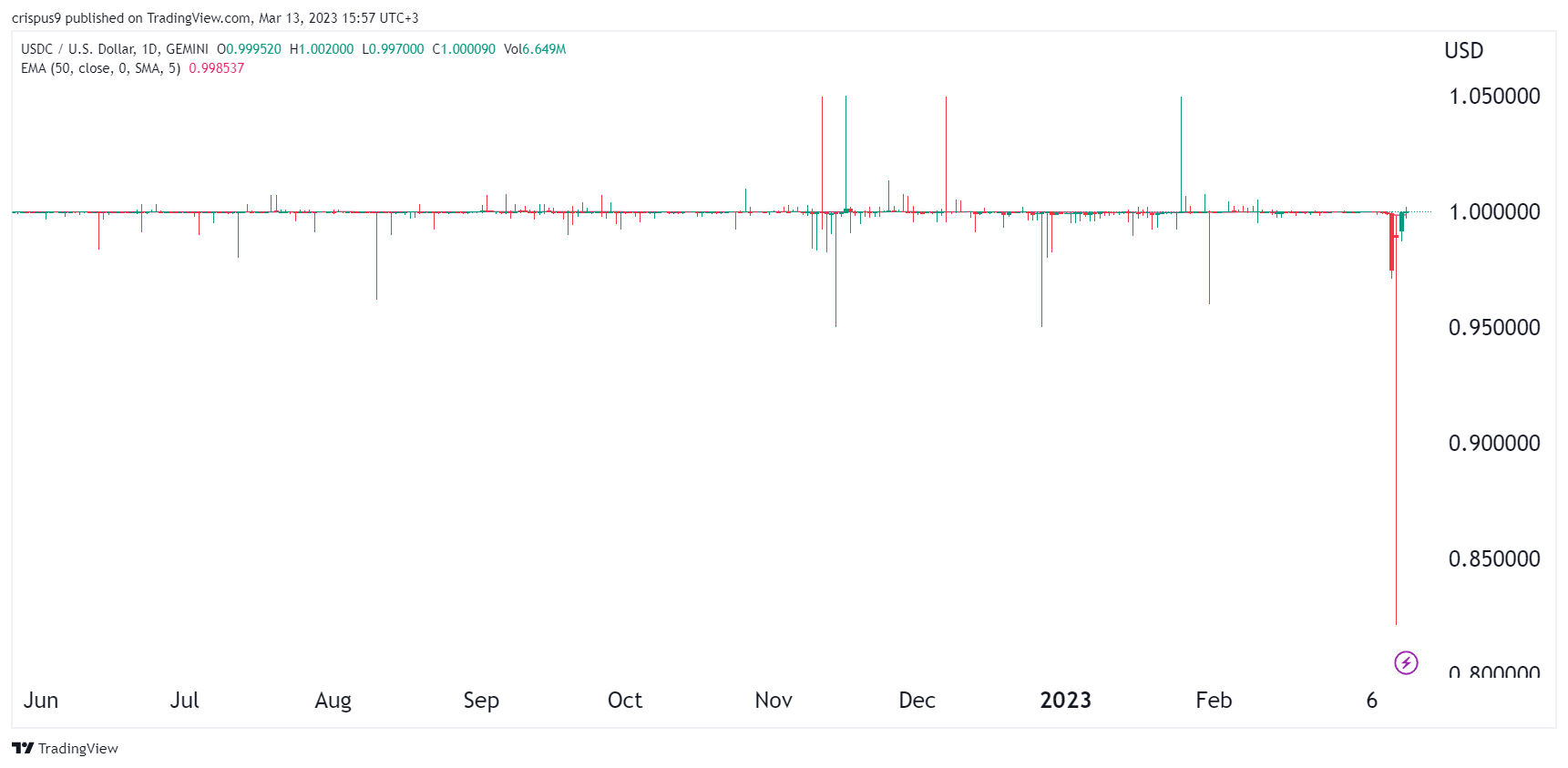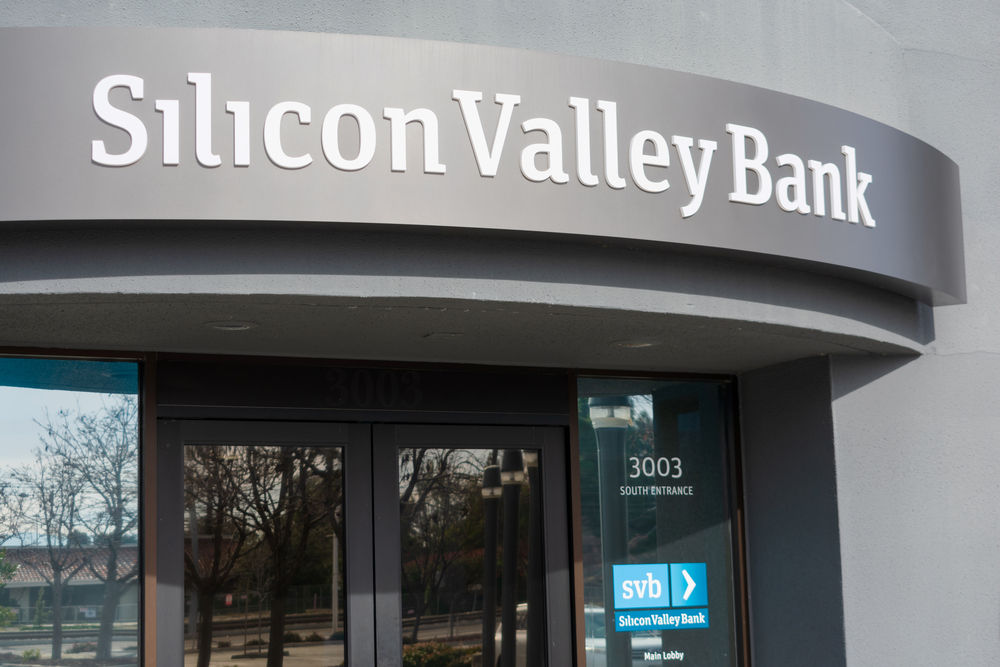- USD Coin price regained its peg on Monday.
- The US will provide a backstop for Silicon Valley Bank and Signature Bank.
The USD Coin (USDC) price pared back most of the losses it experienced during the weekend. The stablecoin jumped back to about $1, which was much higher than the weekend low of $0.82. Other stablecoins like Tether (USDT) have done well.
USDC regains its peg
On Friday, I assessed the stability and safety of USD Coin and Tether (USDT), two of the biggest stablecoins in the world. In that report, I vouched for the two stablecoins because of their lack of exposure in Silicon Valley Bank (SVB) and other troubled lenders like Silvergate Capital and Signature Bank.

That analysis proved to be wrong as Circle had over $3.3 billion tied in SVB, a company that banked billions of dollars for America’s tech companies. I used the information provided by Circle, which you can find here.
Therefore, USDC price is rising after the American government and the Federal Reserve announced a backstop for all depositors of the company. This means that Circle will have access to the capital this week.
This is a positive factor considering that USD Coin is supposed to be a stablecoin that can be redeemed at any time. However, the main concern is that Circle has not disclosed clearly where it has stored these funds. Information in its website shows that its funds are stored in Bank of New York Mellon while its bond portfolio was managed by Blackrock.
Therefore, there is a likelihood that USD Coin will maintain its peg as Circle thinks about where it stores its funds. Like other companies, the firm will likely move funds to bigger systematically important banks like JP Morgan and Bank of America.
Is Tether (USDT) safe?
In the same report on Friday, I wondered whether Tether’s USDT was safe as well. In it, I used its reports, which are audited by BDO, to reiterate that Tether remained significantly safe. In two tweets, Tether said that it had no exposure to Silicon Valley Bank (SVB) and Signature Bank. It is still unclear the banks that Tether uses.
It is also worth noting that most of Tether’s and Circle’s reserves are not in cash. Instead, these reserves are in short-term government bonds, which sees them continue making money as interest rates rise. Higher interest rates saw Circle make a net profit of over $700 million in the fourth quarter.
Therefore, if these numbers are accurate and if interest rates remain high for a while, these firms will still generate enough funds to stabilize the stablecoins. Most importantly, the near-death experience will likely see more regulations that will bring more transparency in the industry.












